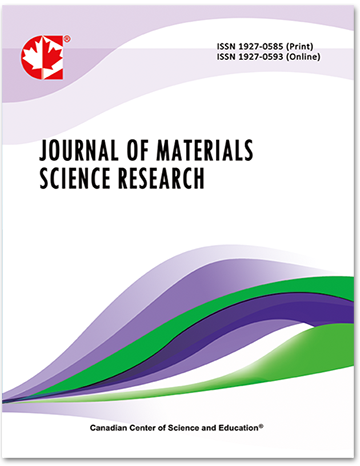Functionalization of Carbon Nanotubes and Polymer Compatibility Studies
- Antonio Sánchez
- Rodrigo Cué Sampedro
- Laura Peña-Parás
- Erika Palacios-Aguilar
Abstract
Multiwalled carbon nanotubes (MWNTs) were oxidated and functionalized in order to determine the structural and chemical changes on their atomic bonding. MWNTs were oxidized in an aqueous solution of HNO3 (70%) and H2SO4 (95%) at 25 °C. Pristine and oxidized carbon nanotubes (ox-MWNTs) were characterized by scanning electron microscopy (SEM), Fourier transform infrared spectroscopy (FTIR), Raman spectroscopy, and thermogravimetrical analysis (TGA). MWNTs and ox-MWNTs were silane-functionalized and incorporated into a polymethyl-methacrylate (PMMA) matrix. The dispersion properties and interface interactions were studied for the composite materials. MWCNTs oxidation was performed and supported by Raman spectroscopy and FTIR results of disorder and defects in the carbon lattice; as well as change in the amount and type of chemical groups attached to the CNTs walls. Roughness areas visible in SEM images indicate Van der Waals interactions between CNTs and functionalization reagents. Control of the oxidation state can effectively direct molecular functionalization of a CNT sidewall. Composites showed good dispersion of filler; with the best one for oxidized-silane functionalized CNTs.
- Full Text:
 PDF
PDF
- DOI:10.5539/jmsr.v3n1p1
Journal Metrics
Impact Factor 2022 (by WJCI): 0.583
Google-based Impact Factor (2021): 0.52
h-index (December 2021): 22
i10-index (December 2021): 74
h5-index (December 2021): N/A
h5-median (December 2021): N/A
Index
- CAS (American Chemical Society)
- CNKI Scholar
- Elektronische Zeitschriftenbibliothek (EZB)
- EuroPub Database
- Excellence in Research for Australia (ERA)
- Google Scholar
- Infotrieve
- JournalTOCs
- LOCKSS
- NewJour
- PKP Open Archives Harvester
- Qualis/CAPES
- SHERPA/RoMEO
- Standard Periodical Directory
- Universe Digital Library
- WJCI Report
- WorldCat
Contact
- John MartinEditorial Assistant
- jmsr@ccsenet.org
